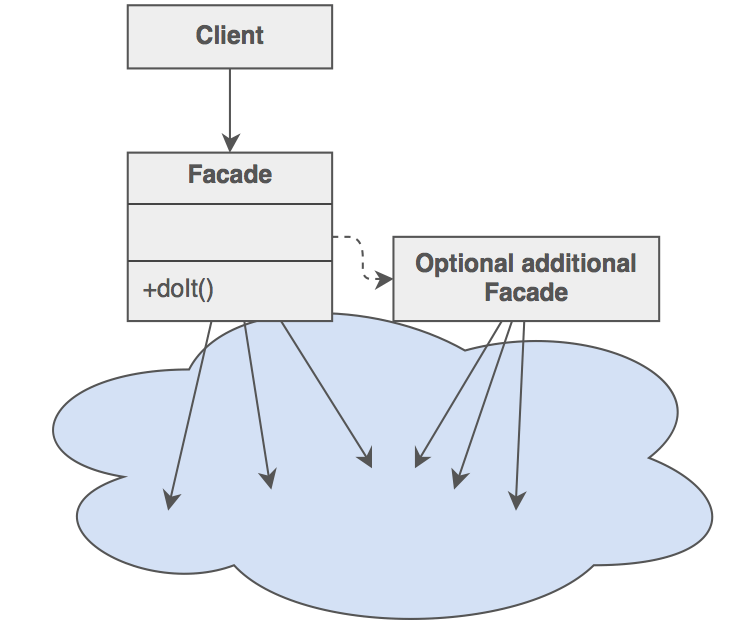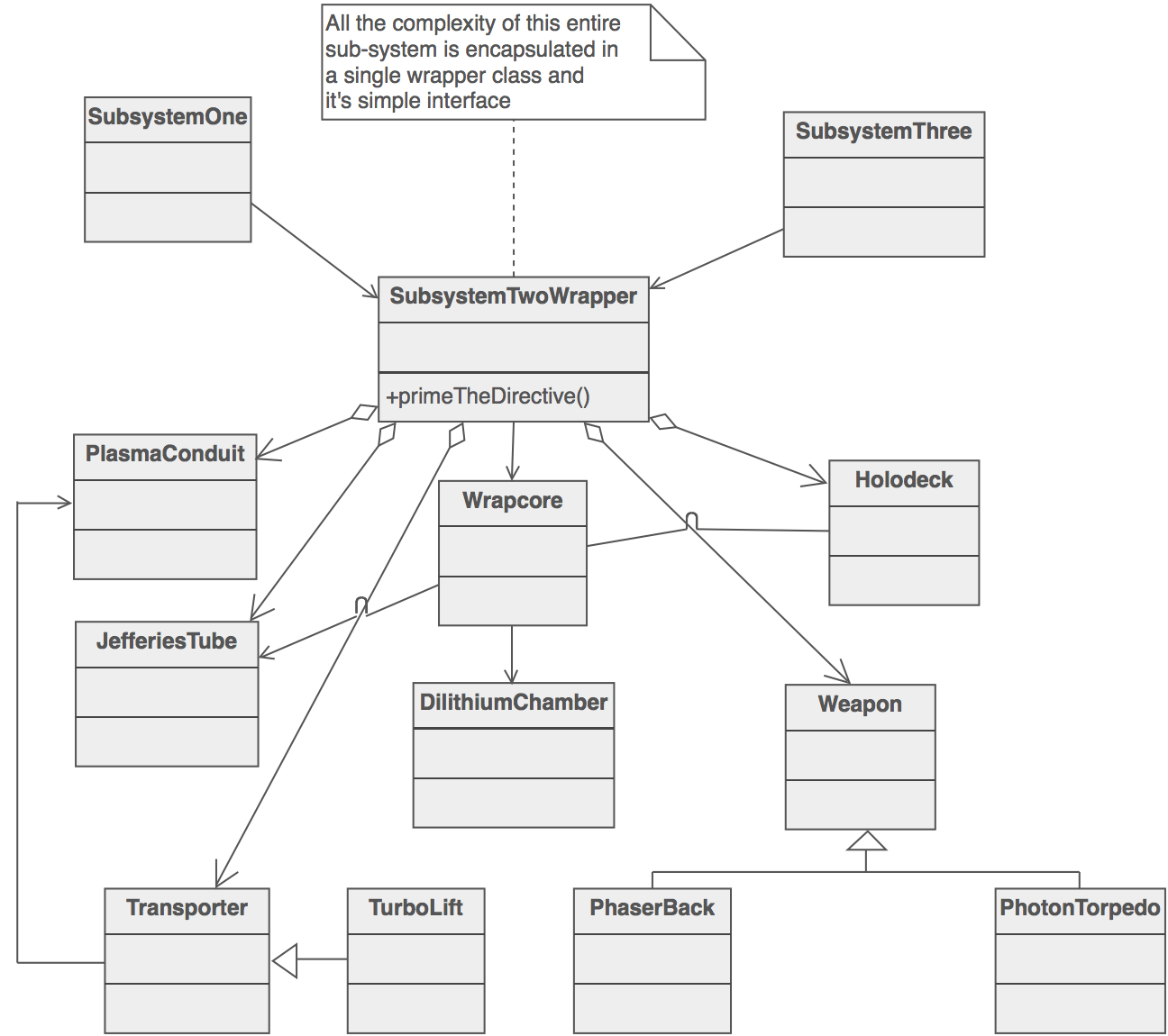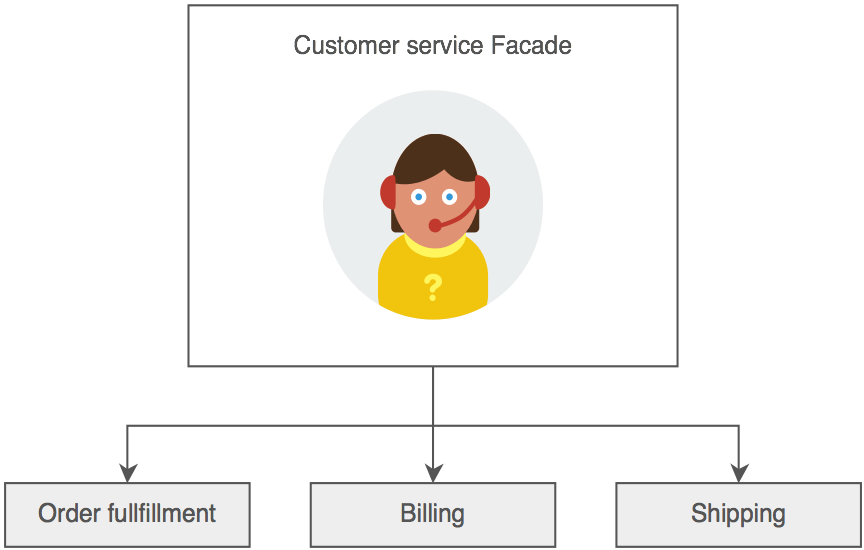Facade Design Pattern
Intent
Provide a unified interface to a set of interfaces in a subsystem. Facade defines a higher-level interface that makes the subsystem easier to use.
Wrap a complicated subsystem with a simpler interface.
Problem
A segment of the client community needs a simplified interface to the overall functionality of a complex subsystem.
A segment of the client community needs a simplified interface to the overall functionality of a complex subsystem.
Discussion
Facade discusses encapsulating a complex subsystem within a single interface object. This reduces the learning curve necessary to successfully leverage the subsystem. It also promotes decoupling the subsystem from its potentially many clients. On the other hand, if the Facade is the only access point for the subsystem, it will limit the features and flexibility that "power users" may need.
The Facade object should be a fairly simple advocate or facilitator. It should not become an all-knowing oracle or "god" object.
Structure
Facade takes a "riddle wrapped in an enigma shrouded in mystery", and interjects a wrapper that tames the amorphous and inscrutable mass of software.

SubsystemOne and SubsystemThree do not interact with the internal components of SubsystemTwo. They use the SubsystemTwoWrapper "facade" (i.e. the higher level abstraction).

Facade discusses encapsulating a complex subsystem within a single interface object. This reduces the learning curve necessary to successfully leverage the subsystem. It also promotes decoupling the subsystem from its potentially many clients. On the other hand, if the Facade is the only access point for the subsystem, it will limit the features and flexibility that "power users" may need.
The Facade object should be a fairly simple advocate or facilitator. It should not become an all-knowing oracle or "god" object.
Structure
Facade takes a "riddle wrapped in an enigma shrouded in mystery", and interjects a wrapper that tames the amorphous and inscrutable mass of software.

SubsystemOne and SubsystemThree do not interact with the internal components of SubsystemTwo. They use the SubsystemTwoWrapper "facade" (i.e. the higher level abstraction).

Example
The Facade defines a unified, higher level interface to a subsystem that makes it easier to use. Consumers encounter a Facade when ordering from a catalog. The consumer calls one number and speaks with a customer service representative. The customer service representative acts as a Facade, providing an interface to the order fulfillment department, the billing department, and the shipping department.

Comments
Post a Comment